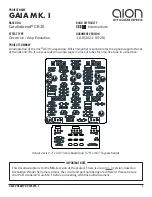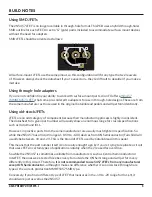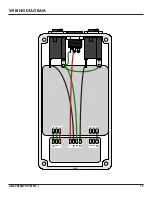
GAIA PREAMP DRIVE MK. I
2
TABLE OF CONTENTS
1
Project Overview
8
Drill Template
2
Introduction & Usage
9
Enclosure Layout
3-5
Parts List
10
Wiring Diagram
6
Build Notes
11
Licensing
7
Schematic
11
Document Revisions
INTRODUCTION
The Gaia Preamp Drive Mk. I is an adaptation of the Catalinbread CB30, their pedal emulation of a Vox®
AC30 amplifier.
The CB30 was originally released in 2011. Curiously, there were two different versions, although there’s
no official record from Catalinbread of a V1 and V2.
Aion FX traced a version with eight JFETs
in 2021,
and the PCB was dated 2011. However,
the Freestompboxes.org community traced one
during the first
month it was released (June 2011) and the photos show a completely different PCB layout and a circuit
with only five JFETs.
You can read more about this in the tracing journal post, including theories on why there was a
redesign—but it’s sufficient to say that anyone building a CB30 DIY clone in the past ten years was not
hearing the improved version.
The original CB30 used 2N5457 JFETs, which are no longer available in through-hole format. Extra pads
have been provided if you want to use surface-mount JFETs (part number MMBF5457), which perform
identically to those used in Catalinbread pedals. Aion FX also offers
adapter boards if you find surface-mount parts intimidating. See build notes for more details.
In 2012, the CB30 was incorporated into the Galileo, a dual pedal containing a Rangemaster-derived
Naga Viper treble booster in the same enclosure, emulating Brian May’s treble-boosted AC30 guitar
tone. In 2014, the second version of the Galileo was released, this time a single pedal that internally
contained the Naga Viper and a redesigned CB30 using MPF4393 JFETs, but with only three knobs and
one footswitch. This is available from Aion FX as the
The Gaia Mk. I can be run at 18V for increased volume and clarity, but it is not compatible with the
Voltage Doubler / Bypass module
due to the larger format of the PCB.
USAGE
The Gaia Mk. I has the following controls:
•
Gain
controls the amount of gain in the first amplifier stage.
•
Bass
and
Treble
form a two-band tone stack arranged the same as the original Vox amplifiers.
•
Volume
is the overall output level.





























